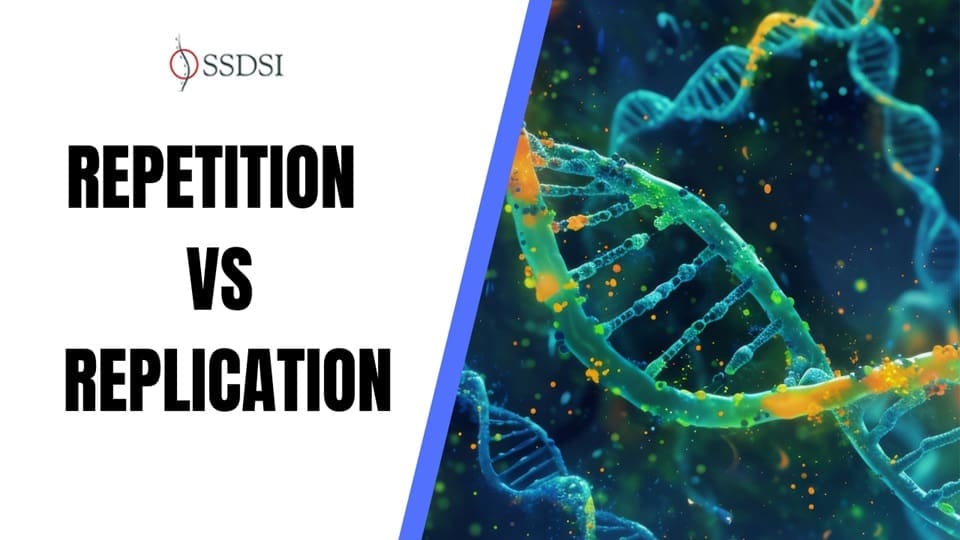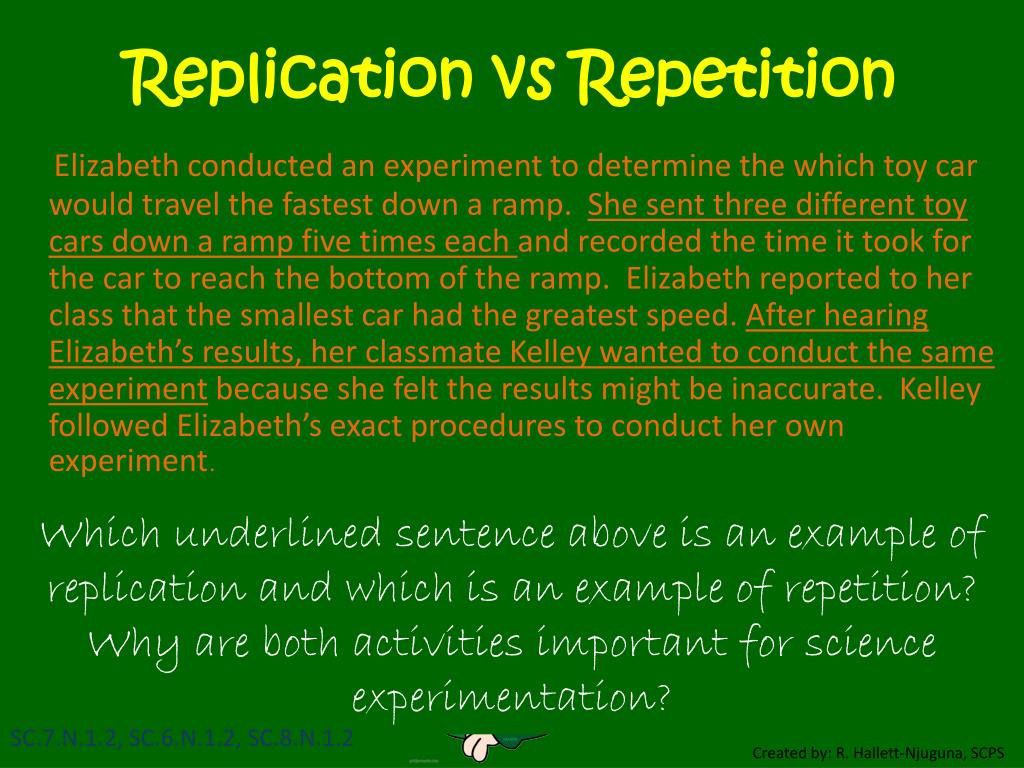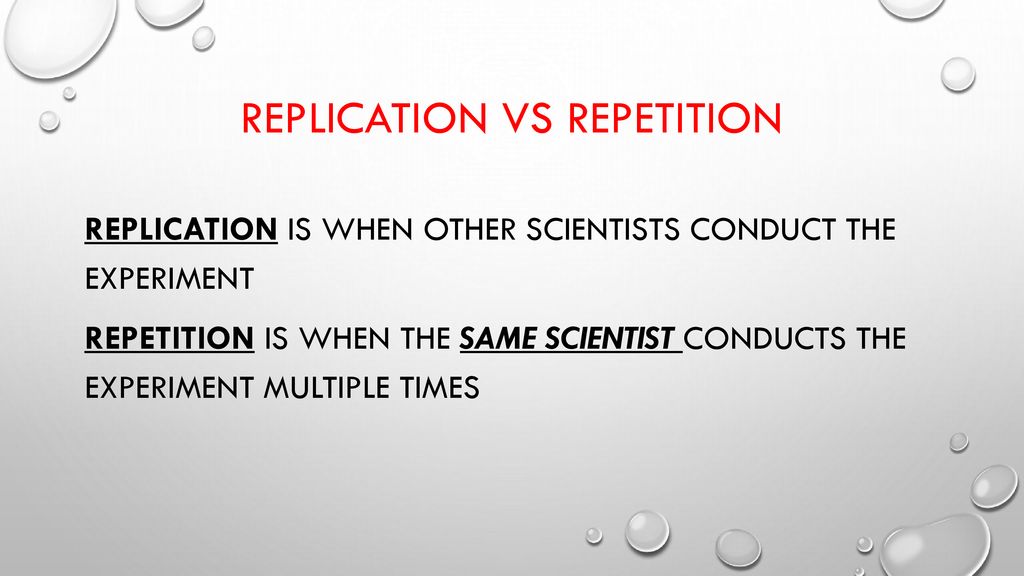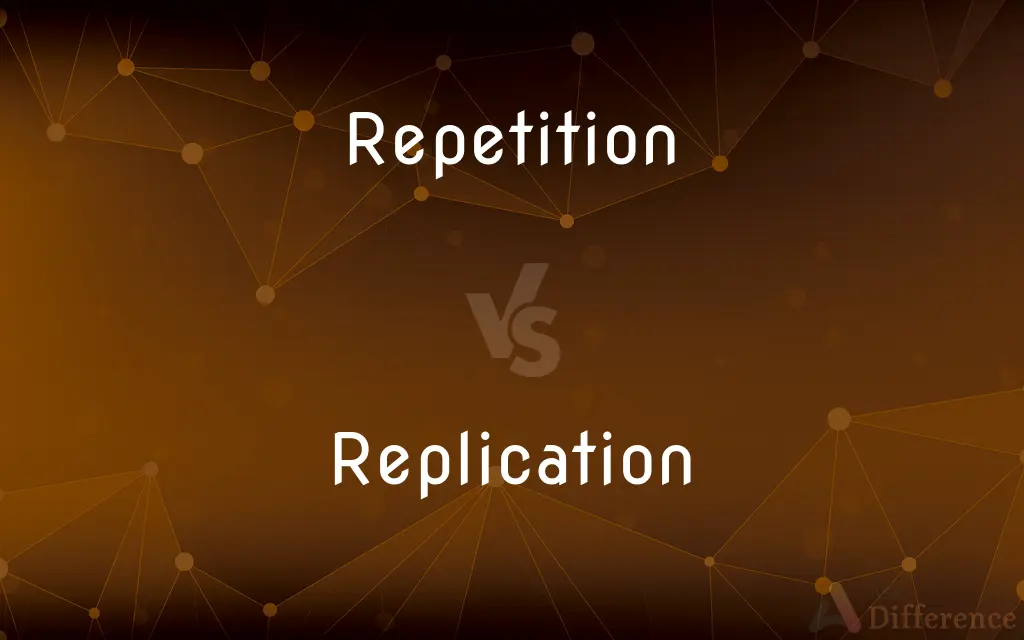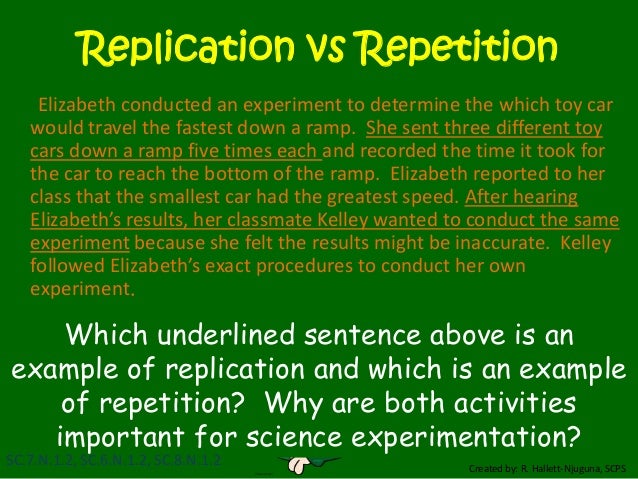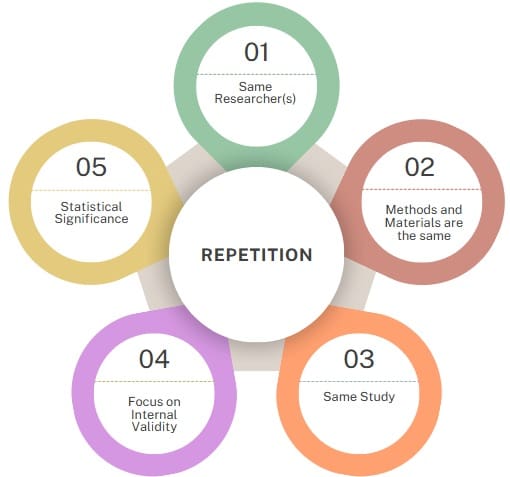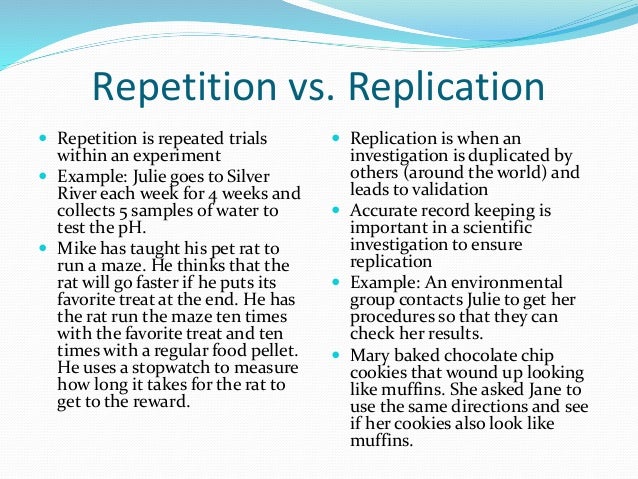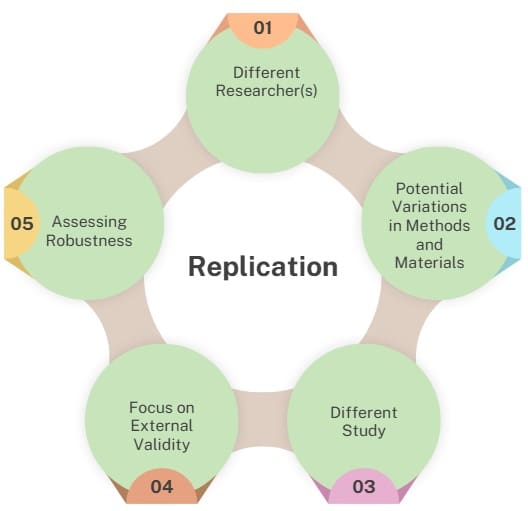What Is The Difference Between Repetition And Replication
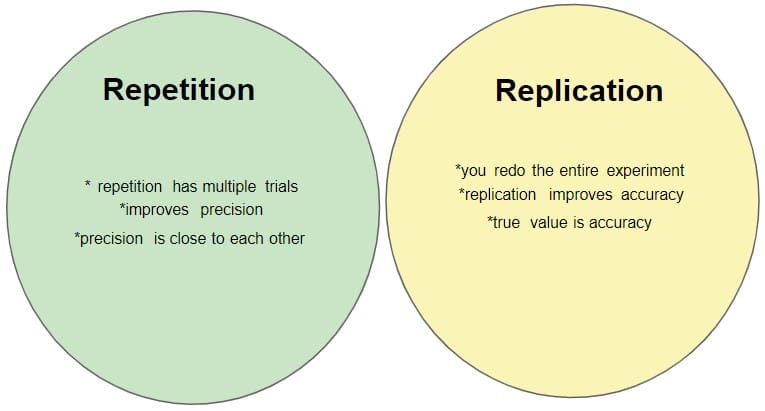
In the relentless pursuit of scientific truth, two seemingly synonymous terms – repetition and replication – often intertwine, yet their subtle distinctions hold profound implications for the validity and reliability of research findings. The integrity of scientific progress hinges on our understanding and conscientious application of these concepts, shaping the credibility of studies across diverse fields from medicine to psychology.
The core of the debate lies in whether an experiment's result is reproducible or not. Can independent researchers validate previously published findings and advance scientific understanding? This article dissects the fundamental differences between repetition and replication, exploring their distinct methodologies, and their crucial roles in bolstering the robustness of scientific knowledge.
Understanding the Nuances: Repetition vs. Replication
At its heart, repetition involves conducting multiple trials of the same experiment, using the same experimental setup, equipment, and protocols. The goal is to assess the consistency and precision of the original results under identical conditions. Think of it as checking your own work.
Replication, on the other hand, takes a step further. It entails an independent researcher or team conducting a new experiment designed to validate the findings of an existing study. This often involves using different data sets, equipment, methodologies or populations.
The crucial difference lies in independence and the degree of variation in the experimental setup. Repetition seeks to confirm internal consistency, while replication aims to verify the generalizability of the findings.
Repetition: Internal Consistency and Precision
Repetition is a cornerstone of good laboratory practice. By running multiple trials, researchers can quantify the random error inherent in any measurement process. The results help in determining the precision of the experiment and calculating key statistical parameters, such as standard deviation and confidence intervals.
This process allows researchers to identify and address potential sources of error within their own experimental design. High levels of repeatability strengthen the credibility of the initial findings by demonstrating that the results are not simply due to chance or some systematic bias within the experiment.
However, repetition, by itself, cannot rule out flaws that exist within the initial experimental design. If the methodology itself is flawed, no amount of repetition will correct it.
Replication: Generalizability and External Validity
Replication is crucial for establishing the external validity of a scientific finding. By testing the same hypothesis using different samples, populations, or methodologies, replication assesses whether the original finding is robust and can be generalized to other contexts.
Successful replication provides strong evidence that the finding is not specific to the original experimental setup or population studied. This fosters greater confidence in the findings and strengthens its position within the scientific community.
Failures to replicate, however, can raise serious questions about the validity of the original research. It may indicate methodological flaws, sample bias, or even outright fraud, leading to calls for re-evaluation of the original findings and, possibly, retraction of the publication.
The Replication Crisis: A Wake-Up Call
The scientific community has faced what has been termed a "replication crisis" in recent years. Several high-profile studies in fields such as psychology, medicine, and economics have failed to be replicated by independent researchers.
This crisis has prompted significant introspection and reforms within the scientific community. Researchers are now emphasizing greater transparency in research methods, larger sample sizes, and pre-registration of studies to reduce the potential for bias.
Organizations like the Center for Open Science are at the forefront of these efforts, promoting initiatives to improve the transparency, reproducibility, and integrity of scientific research. This included encouraging researchers to share their data, materials, and analysis code.
Improving Reproducibility: Steps Towards a More Reliable Science
Addressing the challenges surrounding reproducibility requires a multifaceted approach. First, journals and funding agencies are increasingly prioritizing replication studies and registered reports, which are peer-reviewed before data collection begins.
Second, open science practices, such as data sharing and preregistration, are becoming more widespread. These practices promote transparency and accountability, making it easier for other researchers to scrutinize and replicate findings.
Finally, education and training in rigorous research methods and statistical analysis are essential. This ensures that researchers have the skills and knowledge to conduct sound and reproducible research.
Conclusion: Embracing Both Repetition and Replication
In conclusion, repetition and replication, while distinct, are equally vital components of the scientific process. Repetition ensures the internal consistency and precision of a study, while replication establishes its external validity and generalizability.
By prioritizing both, and embracing practices like open science and rigorous methodology, the scientific community can foster a culture of transparency and accountability. It will strengthen the reliability and validity of research findings.
Ultimately, investing in reproducibility is an investment in the future of science itself. A future where discoveries are reliable, and drive informed decisions that benefit society.


